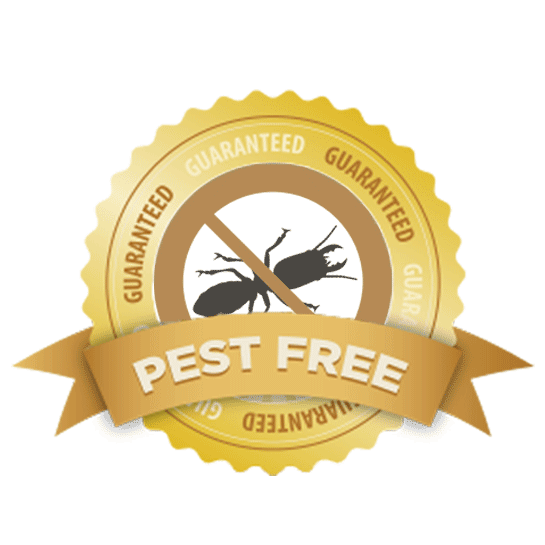Top Quality A1 Pest Control Services Charlotte - Secure Your Home
Bed Bug Therapy Breakdown: Comparing Chemical Vs. Non-Chemical Solutions
In the world of pest control, especially when dealing with the consistent concern of bed bugs, the option in between chemical and non-chemical therapy services can be a pivotal one. Both methods use distinctive advantages and downsides, influencing variables such as effectiveness, safety and security considerations, and total price. By analyzing the nuanced details of each technique, a more clear understanding of which course to seek in addressing a bed bug invasion can be acquired.
Performance of Chemical Therapies
Chemical treatments for bed pest infestations have been widely identified for their powerful and quick efficiency in getting rid of these bugs. When thinking about the efficiency of chemical treatments, it is crucial to recognize that they can offer a extensive and fast service to a bed pest issue.
Additionally, chemical therapies have the advantage of using residual effects, meaning that they can remain to remove bed bugs even after the initial application. This residual activity is especially beneficial in combating any kind of possible re-infestations. Additionally, the quick activity of chemical therapies can bring relief to people facing serious bed insect invasions, permitting them to restore control of their space rapidly.
Safety And Security Worry About Chemical Solutions
When utilizing chemical solutions for bed bug therapy is making certain the safety of occupants and the environment,One essential aspect that needs mindful factor to consider. While chemical treatments can be effective in eradicating bed pests, they may pose risks otherwise dealt with effectively. Among the main safety concerns with chemical remedies is the potential injury they can trigger to human health. Direct exposure to certain chemicals used in bed pest therapies can result in respiratory issues, skin irritation, or other damaging reactions, especially in individuals with pre-existing problems or sensitivities. In addition, incorrect application or dosage of chemical pesticides can result in harmful residues lingering in the treated location, posturing long-lasting health threats to passengers.
Furthermore, the ecological effect of chemical solutions is one more substantial consideration. Some pesticides made use of in bed bug therapies might be dangerous to valuable pests, wild animals, and ecosystems if they leach into the dirt or water supply. It is necessary to make use of chemical therapies judiciously, adhering to safety and security guidelines, and thinking about much less hazardous options to alleviate these threats and ensure the effective and risk-free administration of bed pest problems.
Benefits of Non-Chemical Techniques
Thinking about the prospective safety problems and environmental impact linked with chemical remedies for bed insect treatment, discovering non-chemical techniques provides an appealing alternative with numerous unique benefits. Non-chemical treatments are environmentally friendly, as they do not add to air or water contamination, making them a sustainable selection for insect control.
In addition, non-chemical services can be effective in targeting bed bugs, consisting of hard-to-reach areas where chemical treatments might not permeate. Methods such as warmth therapy, vacuuming, steam cleansing, and mattress coverings supply complete removal without the use of unsafe chemicals. Furthermore, non-chemical strategies can be less disruptive, calling for minimal prep work and permitting quicker reentry into dealt with locations. Overall, choosing non-chemical bed pest treatment methods not just focuses on safety and environmental management yet likewise makes sure detailed and reliable insect control.
Limitations of Non-Chemical Treatments

Furthermore, non-chemical therapies frequently need multiple applications to accomplish effective eradication. This can be lengthy and might not constantly ensure total removal of all bed bugs and their eggs, specifically in hard-to-reach or surprise places.
In addition, the success of non-chemical therapies heavily depends on proper application and thoroughness, which can be testing for people without specialist know-how. Poor application of non-chemical methods might lead to insufficient removal, resulting in consistent invasions and the requirement for extra treatments.
For that reason, while look at here non-chemical treatments have their advantages, it is important to recognize these restrictions and consider them when determining the most reliable strategy for taking care of bed insect problems.
Cost Comparison: Chemical Vs. Non-Chemical Options
Offered the restrictions linked with non-chemical treatments, a necessary element to review in the context of bed bug administration is the price comparison in between chemical and non-chemical options. In contrast, non-chemical treatments like warmth treatment or vapor can be extra costly, with expenses varying from $1,000 to $6,000 for an entire home. While the first price of chemical treatments may appear reduced, several therapies may be needed to completely get rid of the infestation, possibly raising the overall expense.
Final Thought

Thinking about the potential security problems and environmental impact connected with chemical options for bed bug treatment, discovering non-chemical techniques offers an appealing choice with numerous distinctive benefits.Provided the constraints associated with non-chemical treatments, an essential aspect to examine in the context of bed insect monitoring is the price comparison between chemical and non-chemical options. In contrast, non-chemical treatments like heat treatment or heavy steam can be a lot more pricey, with prices helpful site varying from $1,000 to $6,000 for an entire home. While the preliminary expense of chemical therapies might seem reduced, multiple therapies may be called for to totally get rid of the invasion, possibly boosting the total price.In verdict, when comparing chemical and non-chemical bed insect therapy choices, it is crucial to take into consideration efficiency, safety, benefits, constraints, and price.